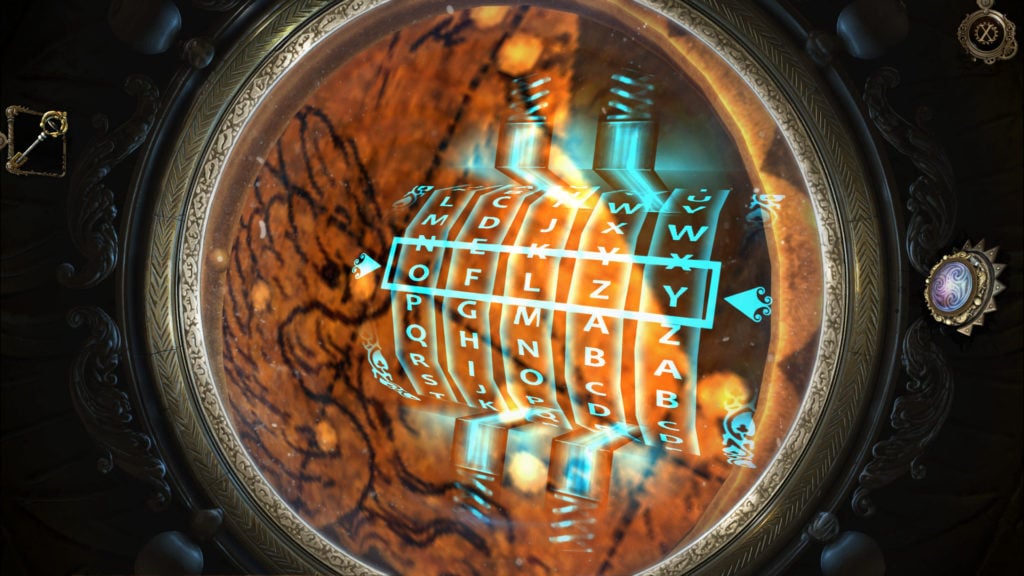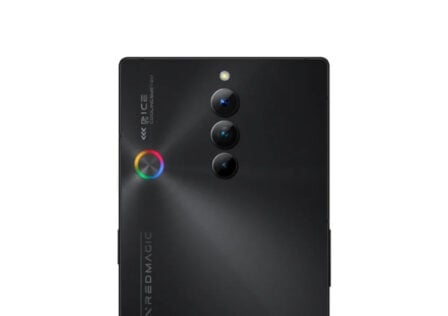Leonardo Da Vinci may be the greatest artist, inventor, and all round polymath the world has ever known, but he has some serious branding issues.
Owing to infinite appearances in pop culture as the archetypal harebrained inventor, plus an unfortunate namecheck in the title of one of the tackiest novels ever written, the words “Da Vinci” are more likely to lower expectations than raise them.
Thankfully, The House of Da Vinci is much better than its fairly unimaginative title would have you believe. This atmospheric, highly polished puzzler takes more than a little bit of inspiration from mobile megahit The Room, but it earns its place alongside Fireproof’s classic thanks to some imaginative puzzle design and top drawer presentation.
Code breaker
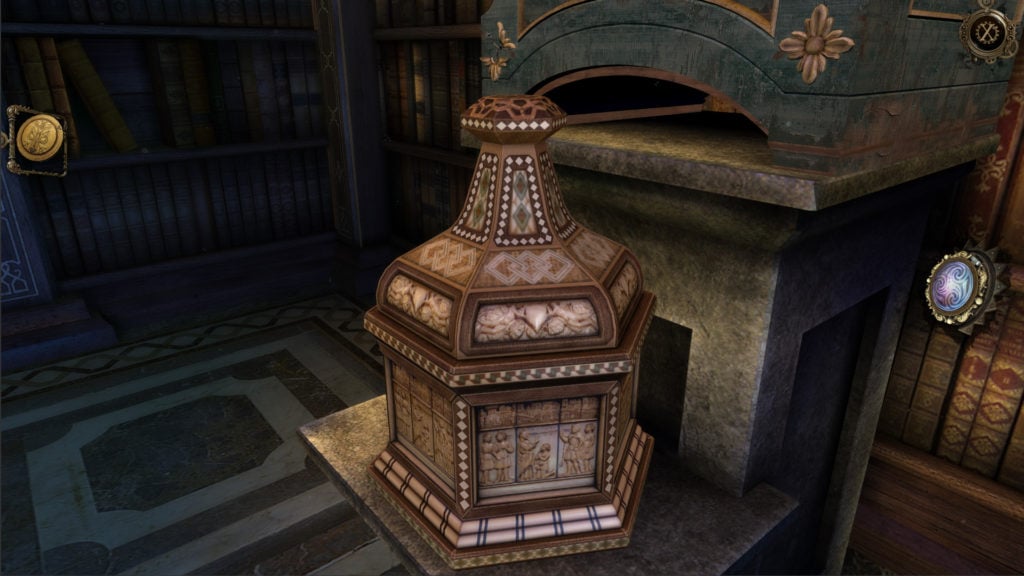
You play as Da Vinci’s favourite apprentice. At the beginning of the game, a guard standing outside your master’s quarters gives you a scroll.
This introduces you both to the storyline (Leonardo is working on a dangerous new invention, and has gone into hiding) and to the controls, which see you not only tapping on the scroll in the messenger’s hand to retrieve it, but also sliding the ribbon off and unfurling the paper in your inventory. This is a very tactile game.
Over the next eight chapters you have to work your way through your master’s chambers and beyond by solving intricate mechanical puzzles purportedly based on Da Vinci’s own margin doodles.
Helping you are two devices: an Oculi Infinitum, which lets you see through surfaces, and an Oculi Tempus, which lets you examine little slices of time, to see what was written on a piece of paper before it was burned, for example, or where Da Vinci walked to reach a hidden entrance.
Puzzling
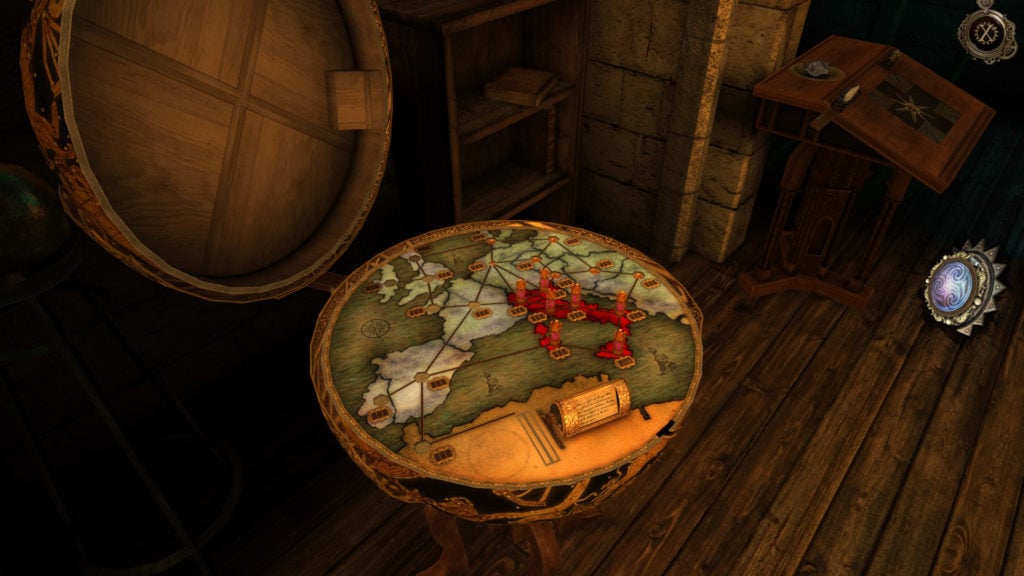
The puzzles are incredibly elaborate, with solutions nested inside solutions nested inside solutions.
Just as you’re congratulating yourself on working out how to extract a key from its hiding place, you learn that you still have to combine it with something else to make it functional, and once you’ve found that thing and turned the key in the lock yet another puzzle appears.
Rooms can take an hour or more to finish (depending on how clever you are), meaning that The House of Da Vinci is a very substantial offering in terms of playing time.
Mercifully, it also contains plenty of variety. While many of the puzzles involve finding objects and sliding stuff around to uncover, unlock, or rearrange mechanical puzzle parts, occasionally making use of one of your Oculi, there are forays into other types of gameplay too, such as a Galcon-style strategy mini-game where you have to conquer the world.
The House of Da Vinci looking fine
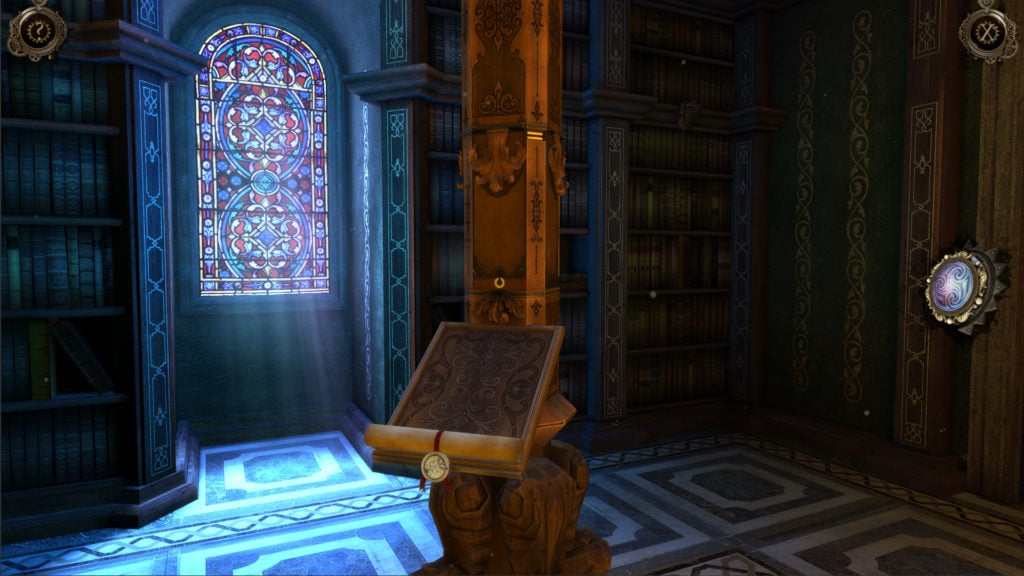
In terms of puzzle design and presentation it’s difficult to fault The House of Da Vinci. The graphics are richly detailed and evocative, and the period music and realistic sound effects do their bit to keep you in the world.
There’s also an excellent hint system, which gives you the option of seeing increasingly heavy hints on a timed, recharging basis.
There are a few tiny niggles. The controls on a 5.7-inch screen can be fiddly, though you get a feel for them after a while, and it’s a shame that it’s not possible to interact in some way with more of the background objects, which would have infused the world with more life.
Exploring can occasionally be hit and miss too. You line up with puzzles by tapping on a part of the room to zoom in on it, and this can lead to random scattershot screen-poking since it’s not always obvious on sight that something is worth looking at. However, these are incredibly minor quibbles, and you can download The House of Da Vinci on Google Play now.
Near puzzle perfection
The House of Da Vinci is a massive, gorgeous, cleverly designed puzzler that gives The Room, its main inspiration, a pretty good run for its money.


